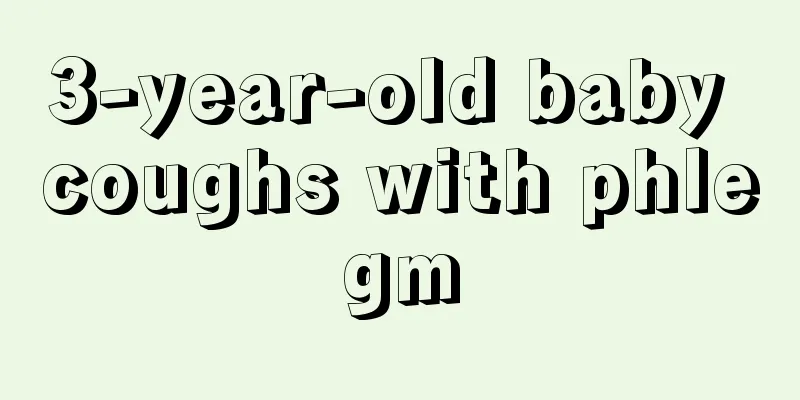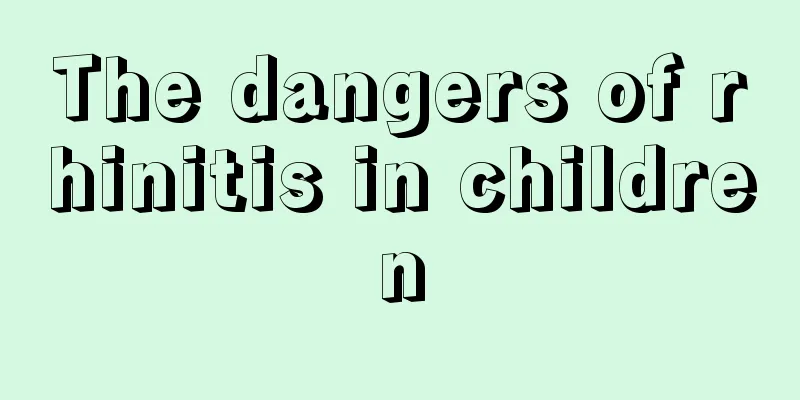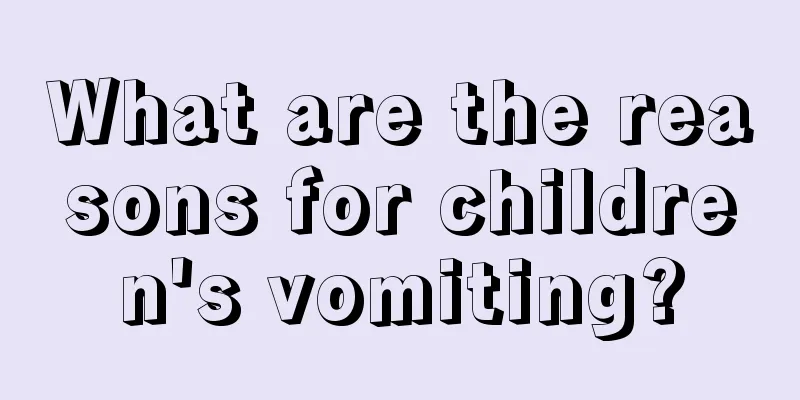What should I do if my child has a fever at night but is normal during the day?

|
Many parents find it strange why their children have a fever at night but are normal during the day, and this happens more than once, but frequently. Parents feel very uncomfortable when they see their children sick. Therefore, many parents think that it is not a big deal if the fever continues like this. So why is this happening? What should we do if our child has a fever at night but is normal during the day? Let us listen to what the experts say, hoping that parents can get some inspiration. Children have poor central temperature regulation function and their skin sweat glands are not yet fully developed. Therefore, fever is a common symptom in children. A child's fever is a normal reaction to fighting disease. Fever can greatly enhance the child's defense function and create favorable conditions for the recovery of inflammation. Therefore, when a child has a fever, as long as the temperature does not exceed 39.5℃, parents can handle it themselves at home. However, there are special cases. For example, babies under one month old and severely malnourished babies may have a fever whose body temperature does not rise but drops below 35°C. In this case, parents should send their children to the hospital for emergency treatment in time. When a child has a fever, parents should first take appropriate measures based on the degree of fever and the specific situation of the child. If a child has cold hands and feet and a pale face when he has a fever, it means the body temperature will continue to rise. Parents need to observe carefully and be prepared to send the child to the hospital for treatment. Once the child's hands and feet are warm and he sweats slightly, it means the body temperature can be controlled and will drop quickly, so parents do not need to go to the hospital. What methods can parents use to reduce fever when their children have a fever? If a baby has a fever, parents can cover the baby's front fontanelle with their palms until the baby sweats slightly. Since the baby's anterior fontanelle has not completely closed before the age of 1 and a half, parents can cover the baby's anterior fontanelle with their palms after the baby falls asleep (it is best for the father to cover it, because men have high temperatures and the baby is prone to sweating) until the baby sweats slightly. At this time, the baby's nose is unblocked, breathing becomes even, and the temperature drops. Wake the baby up again and feed him more warm water or brown sugar water. Most children's fever is caused by colds, and parents can use methods to dispel the cold to deal with it. If the baby has a fever due to a cold and has cold hands and feet, white tongue coating, pale complexion, and light-colored urine, parents can use ginger and brown sugar water to dispel the cold, and add 2 to 3 one-inch long pieces of scallion to the water, which has a sweating effect. However, if the child has a fever but his hands and feet are not cold, his face is red, his throat is swollen and sore, his tongue is coated with yellow or red fur, his urine is yellow and has a strong odor, and his eyes are red, this indicates that the child has severe internal heat and he should not drink ginger and brown sugar water. Instead, he should drink plenty of warm water and you can also add a small amount of salt to the water. Only by drinking plenty of water and urinating frequently can the heat in the body be discharged with urine and the baby's body temperature will drop. In addition, when a baby has a cold and fever, it will affect the function of his digestive system, leading to a decrease in appetite. Parents can give their children some light food, such as porridge, noodles and other semi-liquid foods. For children over 2 years old who have a fever, parents can use massage to reduce the fever. First rub the soles of the child's feet to draw the heat to his feet. After the feet are warm, rub the calves. After the calves are warm, rub the hands, arms, back, and finally the child's ears. When massaging, be gentle and slow, and give your baby plenty of water. If the baby continues to have a fever, you can use warm water to wipe his body, and use a towel to rub the baby's body to warm and red it to dissipate heat from the baby's body; if the baby still has cold hands and feet, it means that the baby has caught a severe cold, and you can give the baby ginger and brown sugar water to drink several times in a row. Parents need to be reminded that the order of drinking scallion, ginger and brown sugar water plus massage treatment is to drink the scallion, ginger and brown sugar water first and then massage. In addition to the above commonly used methods of reducing fever, the most convenient and quickest method of reducing fever is the use of antipyretic drugs. Every family with a baby must always have antipyretic drugs on hand for emergencies, so that parents will not be helpless when their children have a fever in the middle of the night. But many parents don’t know how to use antipyretics correctly. Experts remind parents that there are skills and principles in using antipyretic drugs. Parents should have a correct concept of when and how to use them to avoid poor results or uncontrolled fever. Commonly used antipyretics for children with fever include liquid solutions, tablets, suppositories and injections. Among them, liquid solutions are milder and the most commonly used. Currently, the most commonly used antipyretic medicine for children is syrup containing paracetamol, such as children's Motrin syrup and children's Baifuning drops. Aspirin tablets are also effective in reducing fever. However, in certain specific viral infections, such as chickenpox or influenza, aspirin may induce Reye's syndrome and should not be used. Suppositories are inserted into the anus and absorbed by the rectum. They are effective quickly and can reduce fever even when children refuse to take medicine. They are very convenient. However, it is better to use small amounts. Frequent use can easily lead to excessive fever reduction, a sudden drop in body temperature, or repeated irritation of the anus, causing diarrhea. Giving fever-reducing injections is the most unsafe thing, and some children may even suffer from allergic shock. There are many ways to reduce fever, and they can definitely reduce the temperature. Parents don't need to be impatient and lose the big picture. Experts believe that there are many such situations. The most important thing is not to give your baby antipyretics frequently. If you really need to cool down, just use an ice pack. If it is not very hot, it will not damage the brain. It may also be caused by food accumulation in the stomach. Just give the child some hawthorn granules. Therefore, parents do not need to worry too much about children having a fever at night as it is normal during the day. |
<<: What is the reason for the eight-month-old baby's blood in the stool?
>>: Why do children always have fever at night?
Recommend
Obstructive jaundice, high urinary bile
Most newborns will have jaundice after birth. Und...
One year after child's lumbar injury
Children often play around and make a mess, so it...
Technology cooling ice pack children's physical fever reduction method
Nowadays, parents pay attention to their children...
What to do if your baby has a low-grade fever and diarrhea
When the baby is a few months old, his body is re...
What is the disease when my baby has a white rash?
We all know that the skin of newborn babies is te...
Measuring the temperature of newborn babies
Every baby needs careful care and attention after...
Is it okay for babies to wear socks when sleeping at night?
The birth of a baby brings infinite joy to the wh...
What causes cramps in children? These 6 reasons are the most common
When a child has symptoms of convulsions, parents...
What are the prescriptions for rectal medication in children?
Pediatric rectal disease is a relatively serious ...
The child has frequent urination recently
Frequent urination not only occurs in adults, but...
What's wrong with the baby's nose having mucus?
When a baby's nose is clogged with boogers, i...
How to treat whooping cough symptoms
Whooping cough is an infectious disease of the re...
Is it okay for a six-year-old to learn street dance?
We often see street dance competitions in univers...
Vitamin supplements for children
For children's physical health, the supplemen...
Is it good to give your baby a bath every day?
Bathing children is also a very important thing i...









